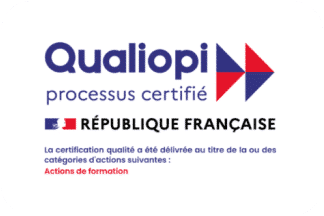Definition of granularization in training
Granularization refers to a training approach that subdivides a training program’s content into the smallest possible independent units. These learning units are individually referred to as items, or nuggets.
Because they are independent, nuggets can be assembled with other units to form a personalized course tailored to an individual trainee’s learning journey. Note that a course’s constituent items (or nuggets) can be combined in multiple ways, depending on the learner’s level and needs.
In an e-learning context, courses are typically granularized by dividing an e-learning module into a number of sequences.
What are the main features of granularized training?
A “granularized” course – i.e. one divided into a number of items – may be unique, as it depends how the items chosen by a trainer are assembled. This type of training is inherently modular. The length of a course, the number of sequences or the requisite level of expertise can vary according to the number and nature of the items chosen. This training approach can be measurable. For example, each e-learning sequence can be evaluated separately, allowing the trainer to identify each learner’s strengths and weaknesses.
Last but not least, “granularized” training is more flexible, allowing it to be adapted for learners’ levels and expectations, and content can be more easily modified to comply with the latest regulations or reflect market developments. Because training items are standalone units, it is much easier for a trainer to incorporate new information such as the enactment of new legislation, for example.
Benefits of granularized training
Granularizing training is a great way to address today’s requirements in terms of individualized learning journeys. In addition, it meets the AFNOR standards on individualized training that now guide professional careers.
E-learning granularization strategies
In e-learning, granularization is a way of storyboarding a course and splitting it into sequences. Although various strategies can be adopted, a few basic principles must be observed.
- Classify and prioritize the information to be passed on
Before dividing the training into items, it is important to classify all the information provided and rank it in order of importance. Training materials should contain no irrelevant information.
- Structure an e-learning course into modules and sequences
Once the most important information has been identified, the content must be divided into a number of modules, which may be organized into separate sequences. All content items in a given module or section must have the same basis and form a coherent whole.
- Organize the training
Note that a learning item can include both an activity (such as a quiz) to be carried out and information to be assimilated. Granularized training content can be organized in a number of ways. If the learner’s progression is linear, the various modules and sequences will follow a set order. The trainee will begin the learning process by mastering any prerequisites before moving on to more complex concepts. There is no provision for “backtracking”.
If, on the other hand, learners are free to circle back to completed modules, the concept of “spiral progression” applies, allowing trainees to revise previously learned concepts at any time, before choosing to acquire new knowledge. Some learning journeys are neither linear nor spiraling, however and offer learners more freedom. In such cases, the trainee’s progress will depend on their choices or level of expertise.

